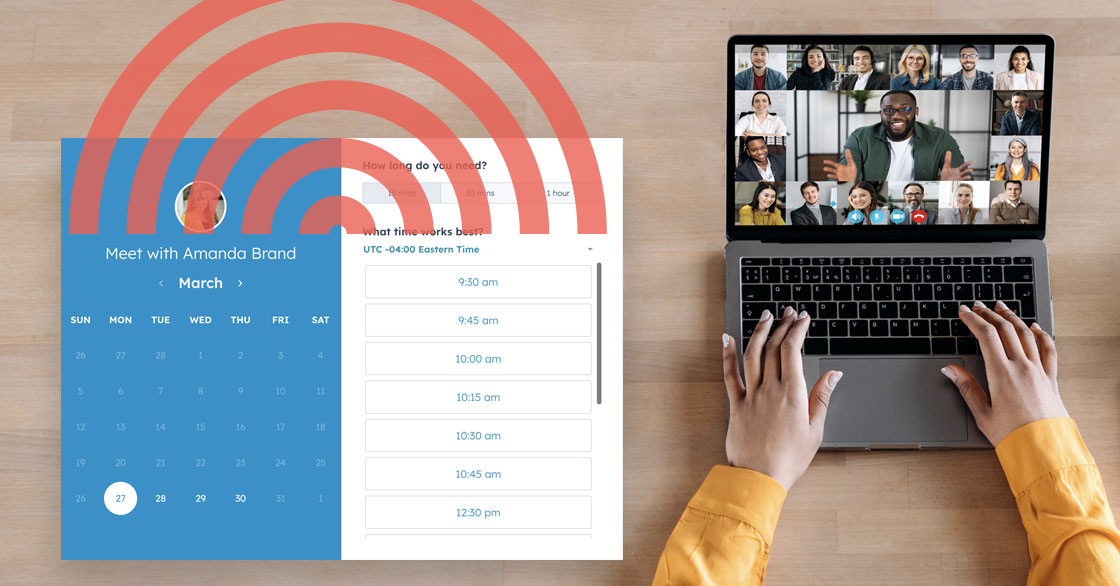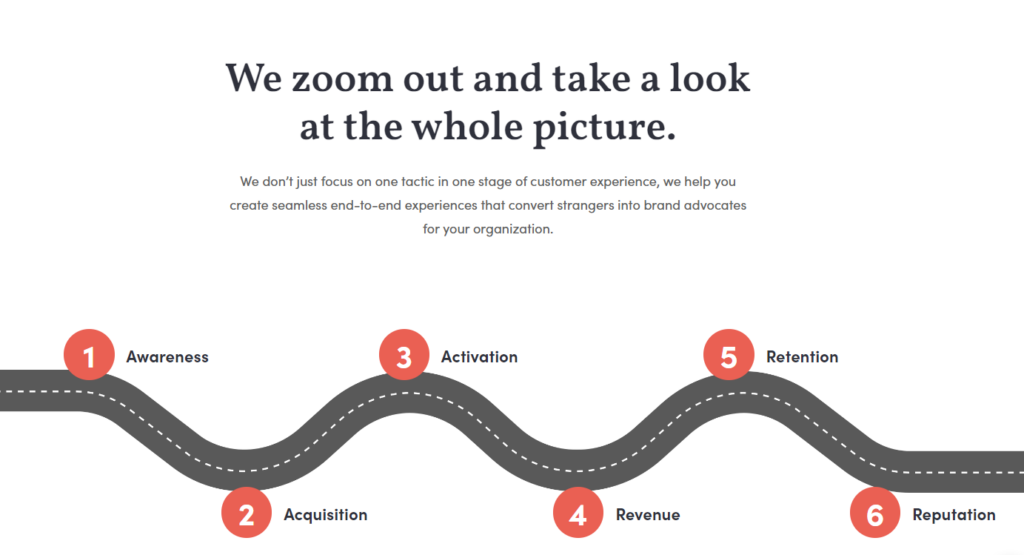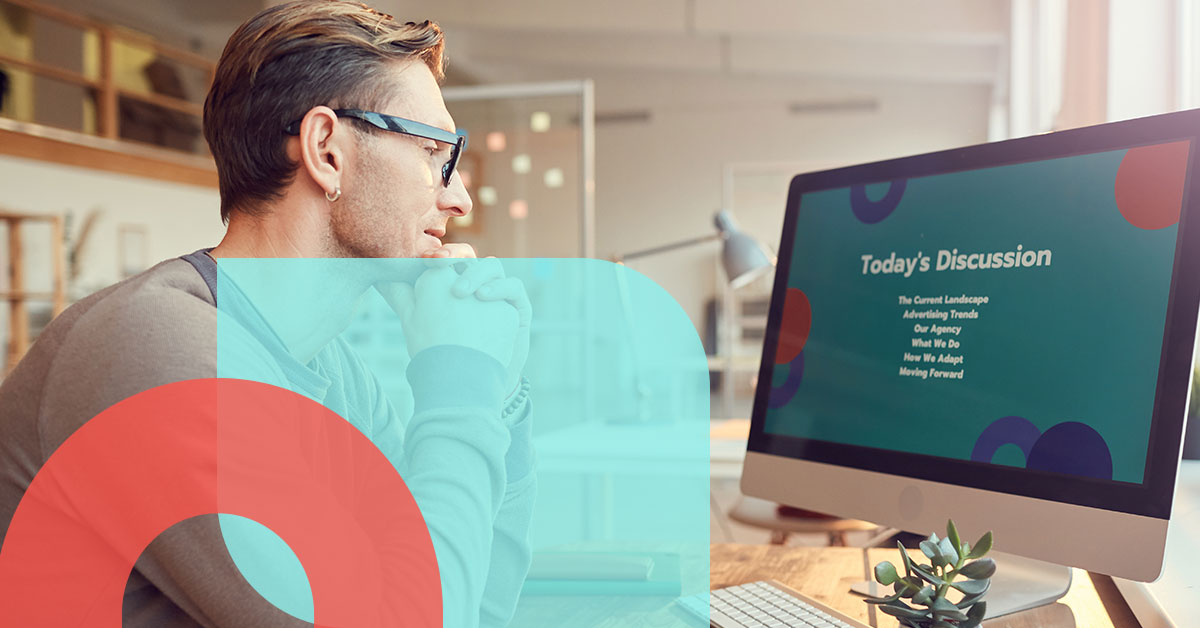Here at MINDSCAPE, we’ve been HubSpot users since 2012 and Certified HubSpot Solution Partners since 2014, so it is safe to say we know our way around the software. Over the years, we’ve seen HubSpot change and grow in some incredible ways. There seems to be a constant stream of new tools and resources to take advantage of, so we wanted to see what we could do to help our customers, other HubSpot users, and even people shopping around for CRM’s understand these tools and learn how and where to apply them.
What we came up with is a free 7-part webinar series called Getting More Out of Your HubSpot Account.
What will we cover in this webinar series?
In this series, we’ll be walking you through the 6 stages of customer experience and sharing the HubSpot tools we believe are most impactful at each stage. For example, week one of our series will start with the first stage of customer experience: Awareness. So, we’ll be reviewing tools that can assist you with spreading awareness of your brand and driving traffic to your website such as the social media scheduler, the blogging tool, the SEO tools and integrations, and ad integrations. You can review the full weekly schedule below:
- Week 1 – May 4: Awareness – Learn how to use HubSpot’s powerful tools to increase your brand’s visibility and generate more leads.
- Week 2 – May 11: Acquisition – Discover how to convert more of your website visitors into qualified leads using HubSpot’s lead generation tools.
- Week 3 – May 18: Activation – Find out how to nurture your leads and turn them into paying customers with HubSpot’s automation and lead management tools.
- Week 4 – May 25: Revenue – Learn how to use HubSpot’s sales tools to close more deals and increase your revenue.
- Week 5 – June 1: Retention – Discover how to keep your customers happy and engaged using HubSpot’s customer service and feedback tools.
- Week 6 – June 8: Reputation – Find out how to monitor and manage your brand’s online reputation using HubSpot’s social media and monitoring tools.
- June 15 – Week 7: Celebration and Q&A – We’ll wrap up the series by celebrating what we’ve learned and giving you the opportunity to ask our experts any questions you may have.
Whether you’re interested in every week or just one, you can sing up for our webinar series by clicking below.

Why should you attend?
We truly believe this will be a great opportunity for you to identify some areas of your CX that could be improved, and learn about the HubSpot tools that have the greatest impact when it comes to improving results in those areas. You’ll walk away with an understanding of what tools you should begin implementing, and not just in one siloed area of HubSpot. Whether you’re in leadership/management, marketing, sales, service, or operations, there will be something for you.
For those who do not have a HubSpot account, this series can still serve as a good overview of what is possible with a fantastic CRM. It may help you get a better understanding of why CRM’s are so popular and if now is a good time for your company to take the next step toward implementing one.

How do you register?
If you’re interested in attending our webinar series, you can learn more about the series and register here. By registering for the series, you’ll be able to attend each week’s webinar. Even if you don’t attend, you’ll receive video recordings of each week’s presentation so you can review at a later date if you wish.

Our customer experience framework.
Here at MINDSCAPE, we prescribe to the “Pirate” or AAARRR customer experience framework. It breaks the entire customer experience down into 6 easy to understand stages that are pivotal to overall business success. Let’s take a look at each of these stages.
Awareness
The Awareness stage of customer experience is centered around getting complete strangers to become familiar with your brand. People can’t buy from you if they don’t know who you are, what you do, or what problems you solve. Your ultimate goal at this stage should be to get your name and message in front of as many people as possible – and hopefully turn these people into website visitors.
Some of the most common ways to generate awareness through digital marketing are with digital ad campaigns, social media marketing, and search engine optimization.
Acquisition
The Acquisition stage of customer experience is where we turn website visitors into leads. That means capturing some of their personal information. Having a strong website design and engaging content and imagery are pivotal to making a good first impression and getting website visitors to explore your site. Offerings such as quizzes, how-to-guides, and discounts that users can trade their personal information for are a great way to get new users to convert.
Activation
Just because a lead has shared their information with you, that doesn’t mean they are going to buy your product or service. That’s where the activation stage comes into play.
Here it’s all about turning leads who are interested in your product or service into leads who are ready to make a purchase. Tools like email nurture campaigns, automation, and lead scoring are great ways to move leads further along in their buying journey and get them ready to buy.
Revenue
Revenue may be the most straightforward stage of customer experience. This is where you turn leads who are ready to buy (often labeled sales qualified leads) into actual customers!
At this stage, leads are ready to make a purchase, but they may not be sure which company they want to purchase from. Having good reviews, case studies, competitor comparison charts, benefit content, performance data, etc., is a great way to ensure that you get the sale over your competitors.
Retention
Retention is the amount of incremental revenue that you can generate from a client. Ideally, you’d like all of our customers to become repeat customers – the goal is to generate customers who want to stick around.
By this stage, you should already have a large chunk of data on our customers – including what products or services they’ve purchased. You can use this information to market similar or complementary products to your customers and increase your chances of making repeat sales.
Some common digital marketing strategies that are used at this stage are ongoing email promotion, customer loyalty programs, upselling and cross-selling, and the creation of customer tools and resources.
Reputation
The Referral stage or the “Reputation” stage is often overlooked. You’ve gotten a customer, they’ve become a repeat buyer, what more is there to do? Well, if you want to make it easier for other customers to purchase from your business, you need to get your current customers to become brand advocates.
Tools like customer satisfaction surveys, review solicitation campaigns, and referral campaigns are great strategies for seeing how good of an experience you are delivering to your customers. These are also great ways to prove to new buyers that you are trustworthy and deliver good products/services.
Don’t forget to sign up for our webinar!
You’ve made it this far, it’d be a shame if you missed the webinar itself. You can sign up by clicking below.





